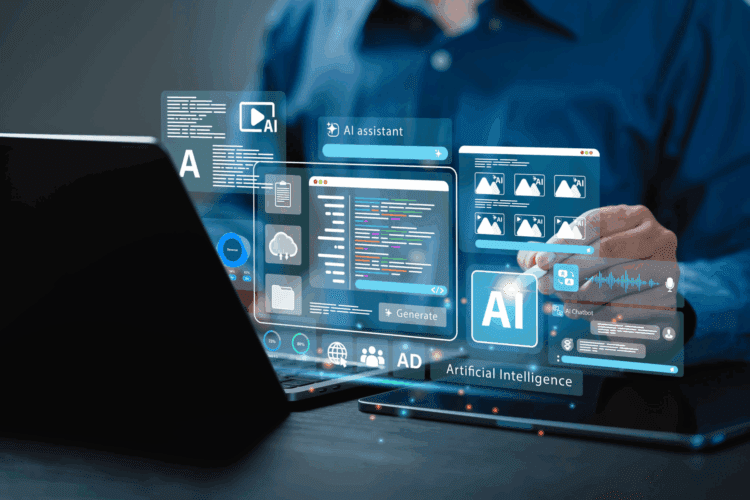When I think back to the beginning of my career just over 20 years ago, it’s safe to say that a lot has changed regarding the way we use technology in HR. In those early years, most employees weren’t interacting with technology much at all for HR processes.
What we were doing: walking down the hall to hand off paper documents that would likely end up in a series of filing cabinets. Or, if you were lucky, manually entered into an HRIS system.
Flash forward to today, and we’re seeing an influx of new technologies taking over the HR space, from HR automation and improved integrations to AI. We’ve also seen process-specific technologies evolve. Applicant tracking systems, learning management systems, and performance management systems to name a few, are offering more rich features than ever before. To many, these new developments can be intimidating and even cause apprehension about technology adoption.
At the same time technology is evolving, the demand on HR professionals to “be more strategic” is ever growing. This creates significant pressure HR professionals to use their time wisely. If you’re spending time being strategic you certainly won’t have time to perform manual processes or manage paper data. The good news is technology, as daunting as it can be, can free up your time to perform more strategic work, have more meaningful conversations with your employees, and, as I like to say, put the human back in human resources.
Here are 5 steps you can take to claim HR’s role as a strategic partner:
Future Trends: What’s Next for HR Technology5 Steps to Claim HR’s Role as a Strategic Partner
1. Digitization
Before anything else in HR digital transformation, I always recommend that organizations prioritize digitization. It’s a huge foundational piece. Every HR department runs on a seemingly endless supply of document types, so moving to paperless documents and processes won’t happen overnight. Instead, take it one day at a time. Make it a habit of asking yourself, “Does this document really need to be physical?” Over time after enough “no’s,” you’ll get to a place where you’re 100% paperless, and I can attest to the value that will bring to your work approach. From my experience going through this process at Naviant, I can’t say enough about how much more you can do with your documents from a technology perspective once they’re digital. The ability to provide the data that is now digital with a paperless approach allows you to build on your accessibility and usability.
2. Data and Process Management
HR manages a huge amount of data, and it’s a challenge to ensure that you know where it’s being stored, who should have access to which data and how long should it be stored. If you’re storing all this information in multiple platforms and differing ways, there are so many opportunities for increased liability which is a compliance nightmare that all HR professionals have to understand and balance at different levels.
At Naviant, we switched to using OnBase to flow our data through our organization. It’s become our system for data management as well as process automation that supports all aspects of our employee lifecycle, from requisition management to onboarding management through departure management. We have trained this automation technology to do the manual repeatable tasks that used to occupy so much of HR’s time. But it doesn’t just save us time. It also upholds our documents’ accuracy and compliance and makes life easier for HR and the employees we support.
Here are two examples of how it’s played out in our organization:
- On the performance management side, we conduct quarterly performance reviews for each employee. Historically, this was managed using a piece of paper that got printed and hand-delivered to managers. Then, it went to the employee, back to the manager, and finally back to HR. Now, OnBase lets us take that digitized document through an automated process we customized to mimic what would otherwise be a manual process. Since the technology is automatically routing the document and sending notifications to all parties, it eliminates a great deal of time and tracking. The papers don’t get lost or easily forgotten about, and my team doesn’t have to follow up with everybody to keep the process moving and completed.
- We used to print off a physical copy of the employee handbook to provide to employees and ask them to return a paper form acknowledging they received and read it. That was a large amount of paper being used to print all those copies of the handbook and it made it a difficult process of tracking and following up on the acknowledgement forms. Now, when employee handbook time rolls around each year, employees receive an automated email notification asking them to read the updated handbook and acknowledge they receive and read it right within OnBase. Since the handbook is now stored digitally, employees can easily log in and access it to reference it at any point they need it. This process significantly reduces the lift on me and my team. Instead of taking the time to follow up with employees who haven’t completed their acknowledgement, the system sends them reminder notifications. We also receive less questions about standard policies that employees are able to access them when they need the information.
These digitized and automated process are immensely helpful to my team since we can spend less time manually facilitating paper-based processes and more time on more valuable, strategic work. I would say that it’s been the biggest component of Naviant’s HR technology journey and really what’s made a significant difference from an ROI perspective.
3. Process Specific Technologies and Integrations
First impressions are crucial for any organization, so improving the candidate experience is another important step to HR digital transformation. At Naviant, we use an applicant tracking system and robust integrations to assist with the process, which has been extremely valuable as a remote nationwide employer. Our automated processes help support:
- Job posting management.
- Candidate and interview management.
- Hiring manager visibility and data to drive decision-making.
- Management of communication between candidates and internal staff.
- Management of recorded interviewing and interview documentation.
- Management of the integration of our supporting candidate management technologies (recorded interviews, offer material management, candidate assessments and background checking).
Since we used to perform all these tasks manually, letting technology take over many aspects of them has been immensely helpful as our candidate numbers have rapidly grown. Better communication and processes isn’t just better for us HR professionals, it also gives candidates a smoother experience. The time it saves us lets us focus on strategic work like focusing on our employer brand.
4. Self Service
Another game-changing way technology can streamline HR data management is through self-service options. Many employee data management systems, including HRIS systems, now offer self-service options. This allows employees to digitally access important employee data, like W-2 forms. It also lets them perform tasks independently, like digitally updating their address. As a result, your employees can get the information they need when needed, and you can spend less time filing paper forms.
Instead of chasing down employees to ask them, “Hey, could you please turn in your W2 form?” we can seek them out to have meaningful conversations that truly enrich their employee experience. We’d rather be talking to employees about how they’re learning and growing in their career, their career goals, and what issues they see in the current employee experience. Now that’s truly putting the human back in human resources!
5. Stay Curious
Even though this “step” is listed last, I believe it should be an ongoing practice from the start of your digital transformation journey through the rest of your career.
As I’ve touched on across the four points above, the HR role has evolved dramatically with the rise of technology. Sure, certain core functionalities still fall within HR, but day-to-day work is changing. We no longer manage data on a micro level, and finding innovative ways to integrate technology into your department is critical.
We need to get curious about how technology is evolving as it relates to HR. Yes, we hold some of the most confidential data within the organization and the onus is on us to ensure we protect that data. But let’s take this as an opportunity to understand how technology can help support the work we do. The demand from the candidate market, the employee experience, the regulatory agencies is ever growing but technology can help ensure that we are meeting the needs and standards that we face.
Scary, right? I get it, but I can’t urge you enough not to let these fears prevent you from pursuing technology and the benefits it can bring. Instead, turn your fear into curiosity that can be used to your advantage in your technology journey. It’ll help you consider important questions when researching and consulting potential vendors.
On your search for new ways to use technology, don’t be afraid to tap into the experience of others for guidance. Look for:
- HR thought leaders who are talking about innovative uses of technology in HR.
- Trusted partners and vendors who can answer your questions and help you find the right fit for your organization.
- Your HR peers – ask them how they’re using new technologies. For instance, the idea of using ChatGPT in HR might sound out there, but you’d be surprised how many HR professionals are using it successfully.
In other words, instead of asking “why shouldn’t I use this,” ask “How should/could I use this?”
It’s Time to Lean Into Technology
Whether we embrace it or not, technology’s prevalence and role within HR is only going to grow in the years to come. One of my favorite pieces of advice I’ve heard from numerous technology experts goes along the lines of:
If we’re able to adapt to them and apply them, they can make our lives easier and help us make an even bigger impact on our organization’s future. It’ll be a key player in your mission to claim HR’s role as a strategic partner. To prepare, take initial steps today. It’ll only benefit you going forward.






